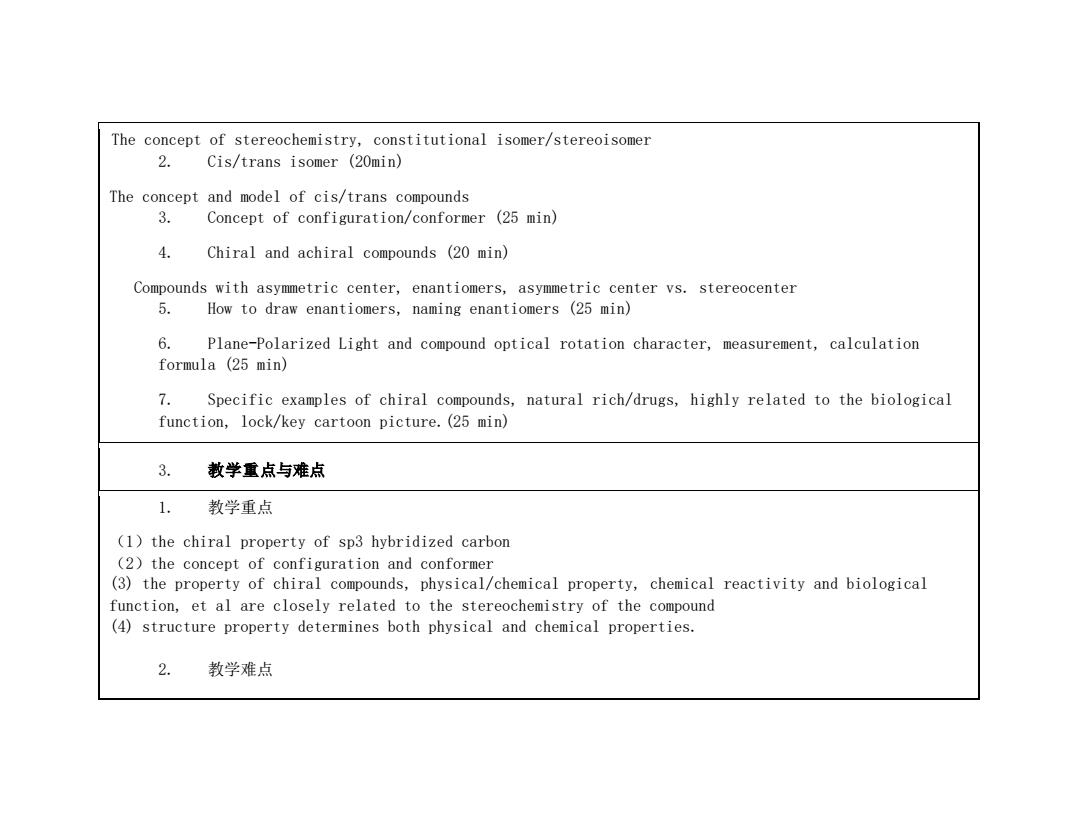
The concept of stereochemistry,constitutional isomer/stereoisomer 2. Cis/trans isomer (20min) The concept and model of cis/trans compounds 3. Concept of configuration/conformer (25 min) 4. Chiral and achiral compounds (20 min) Compounds with asymmetric center,enantiomers,asymmetric center vs.stereocenter 5. How to draw enantiomers,naming enantiomers (25 min) 6. Plane-Polarized Light and compound optical rotation character,measurement,calculation formula (25 min) 7. Specific examples of chiral compounds,natural rich/drugs,highly related to the biological function,lock/key cartoon picture.(25 min) 3. 教学重点与难点 1. 教学重点 (1)the chiral property of sp3 hybridized carbon (2)the concept of configuration and conformer (3)the property of chiral compounds,physical/chemical property,chemical reactivity and biological function,et al are closely related to the stereochemistry of the compound (4)structure property determines both physical and chemical properties. 2. 教学难点
The concept of stereochemistry, constitutional isomer/stereoisomer 2. Cis/trans isomer (20min) The concept and model of cis/trans compounds 3. Concept of configuration/conformer (25 min) 4. Chiral and achiral compounds (20 min) Compounds with asymmetric center, enantiomers, asymmetric center vs. stereocenter 5. How to draw enantiomers, naming enantiomers (25 min) 6. Plane-Polarized Light and compound optical rotation character, measurement, calculation formula (25 min) 7. Specific examples of chiral compounds, natural rich/drugs, highly related to the biological function, lock/key cartoon picture.(25 min) 3. 教学重点与难点 1. 教学重点 (1)the chiral property of sp3 hybridized carbon (2)the concept of configuration and conformer (3) the property of chiral compounds, physical/chemical property, chemical reactivity and biological function, et al are closely related to the stereochemistry of the compound (4) structure property determines both physical and chemical properties. 2. 教学难点
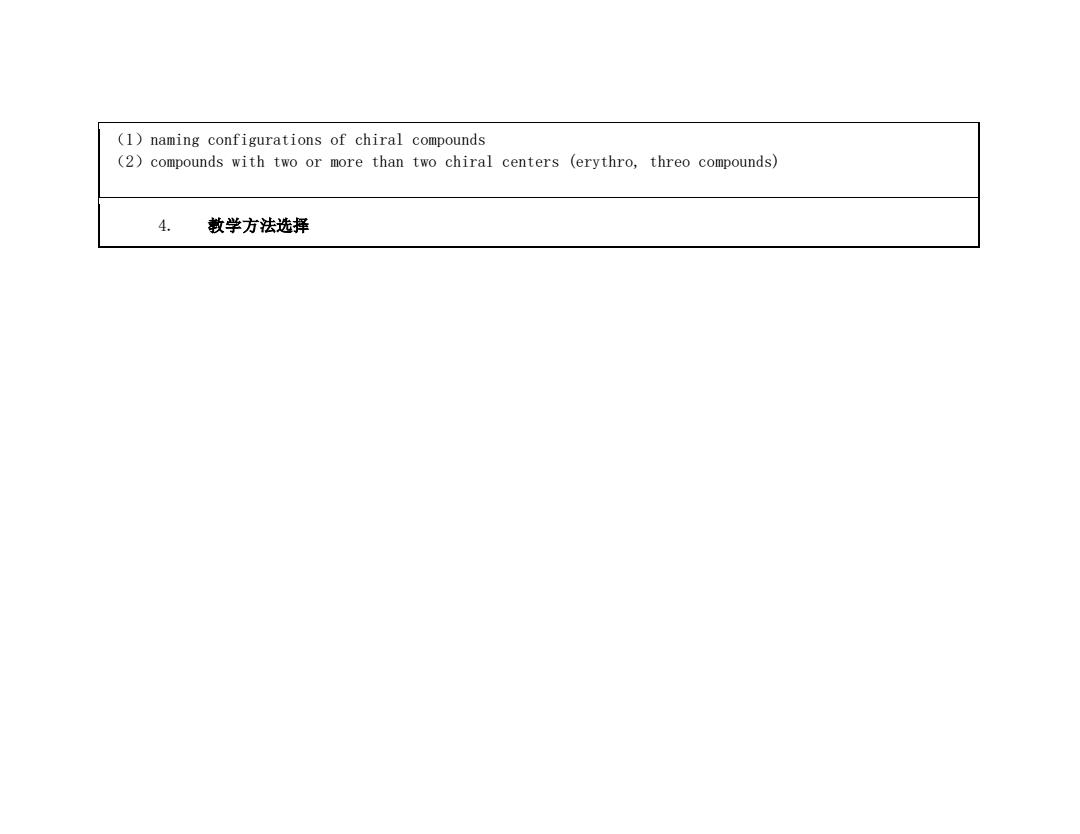
(1)naming configurations of chiral compounds (2)compounds with two or more than two chiral centers (erythro,threo compounds) 4. 教学方法选择
(1)naming configurations of chiral compounds (2)compounds with two or more than two chiral centers (erythro, threo compounds) 4. 教学方法选择
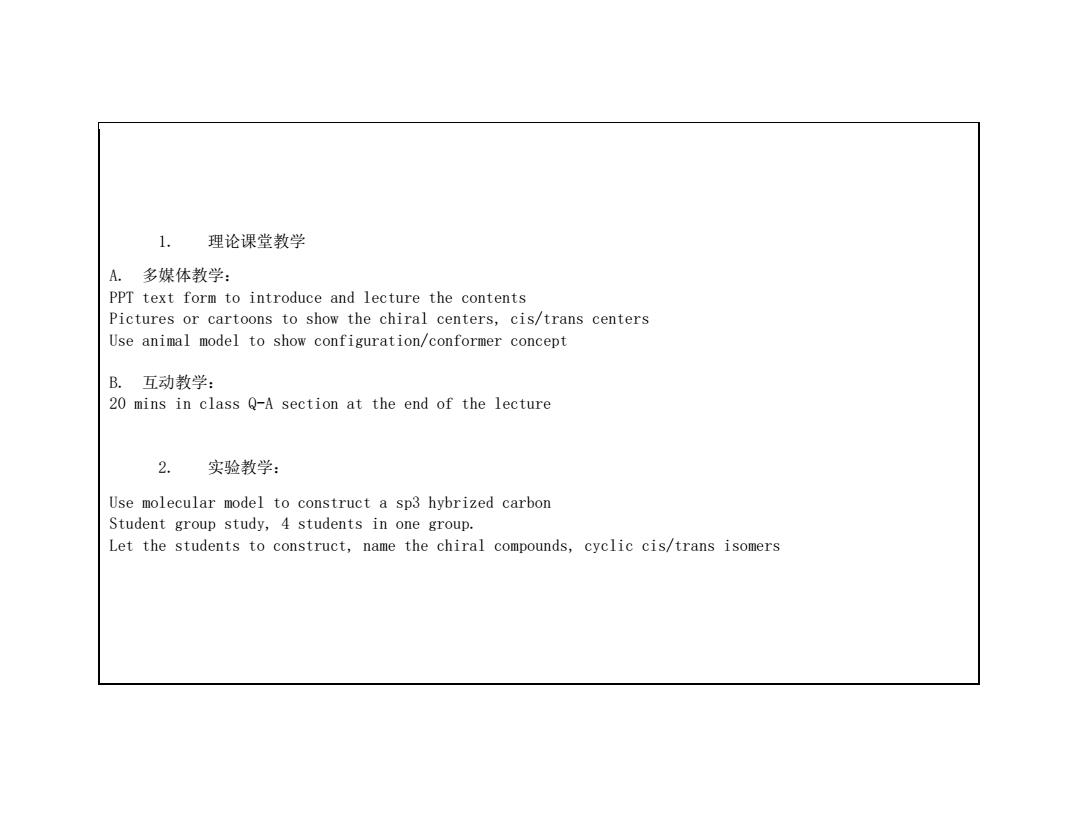
1. 理论课堂教学 A.多媒体教学: PPT text form to introduce and lecture the contents Pictures or cartoons to show the chiral centers,cis/trans centers Use animal model to show configuration/conformer concept B. 互动教学: 20 mins in class Q-A section at the end of the lecture 2. 实验教学: Use molecular model to construct a sp3 hybrized carbon Student group study,4 students in one group. Let the students to construct,name the chiral compounds,cyclic cis/trans isomers
1. 理论课堂教学 A. 多媒体教学: PPT text form to introduce and lecture the contents Pictures or cartoons to show the chiral centers, cis/trans centers Use animal model to show configuration/conformer concept B. 互动教学: 20 mins in class Q-A section at the end of the lecture 2. 实验教学: Use molecular model to construct a sp3 hybrized carbon Student group study, 4 students in one group. Let the students to construct, name the chiral compounds, cyclic cis/trans isomers
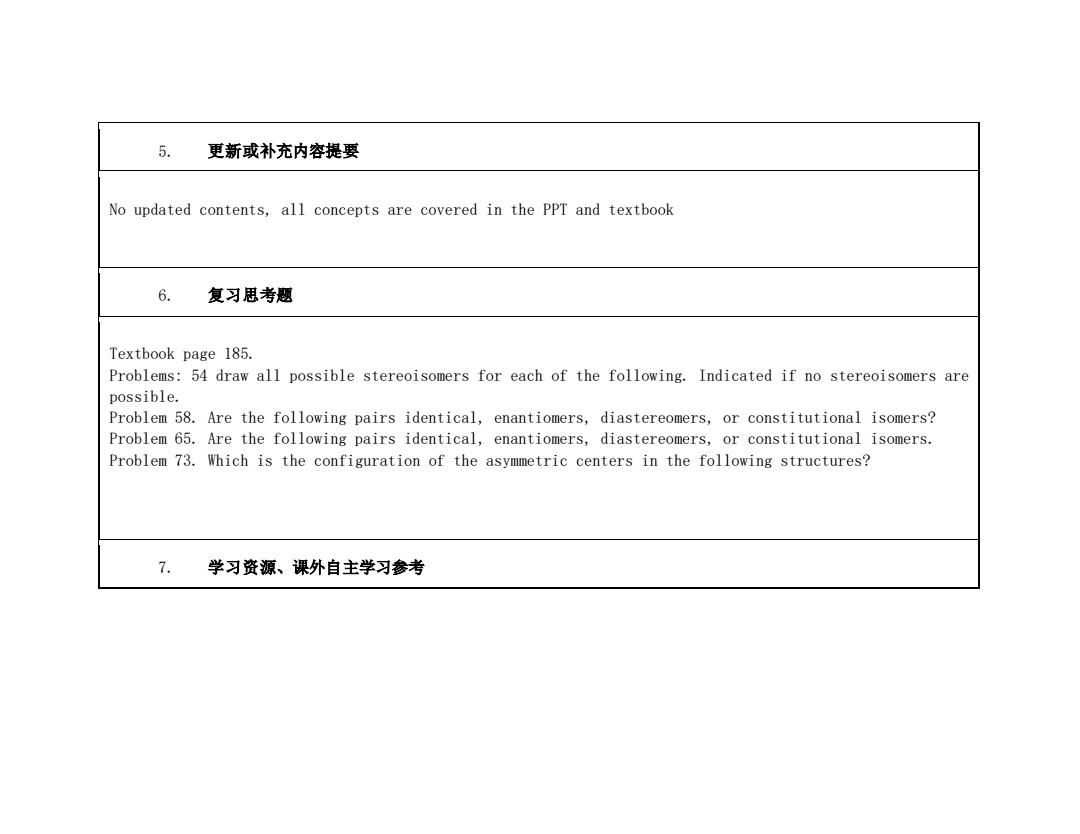
5.更新或补充内容提要 No updated contents,all concepts are covered in the PPT and textbook 6. 复习思考题 Textbook page 185. Problems:54 draw all possible stereoisomers for each of the following.Indicated if no stereoisomers are possible. Problem 58.Are the following pairs identical,enantiomers,diastereomers,or constitutional isomers? Problem 65.Are the following pairs identical,enantiomers,diastereomers,or constitutional isomers. Problem 73.Which is the configuration of the asymmetric centers in the following structures? 7. 学习资源、课外自主学习参考
5. 更新或补充内容提要 No updated contents, all concepts are covered in the PPT and textbook 6. 复习思考题 Textbook page 185. Problems: 54 draw all possible stereoisomers for each of the following. Indicated if no stereoisomers are possible. Problem 58. Are the following pairs identical, enantiomers, diastereomers, or constitutional isomers? Problem 65. Are the following pairs identical, enantiomers, diastereomers, or constitutional isomers. Problem 73. Which is the configuration of the asymmetric centers in the following structures? 7. 学习资源、课外自主学习参考
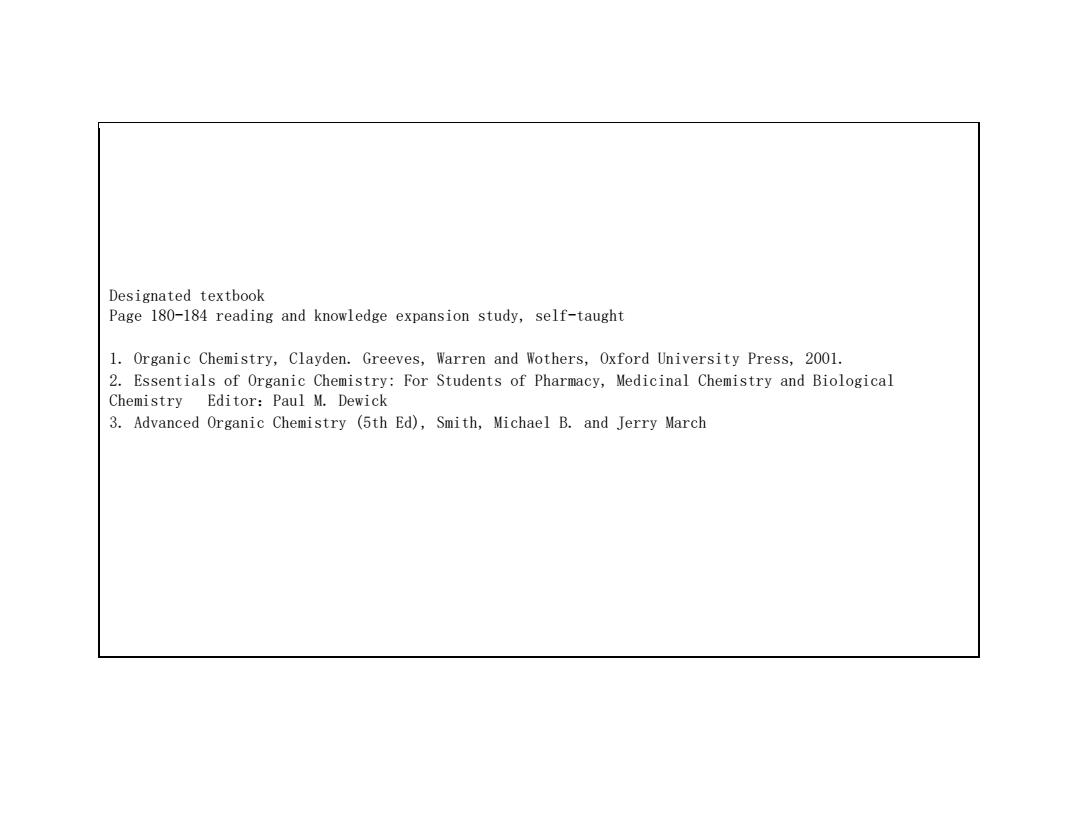
Designated textbook Page 180-184 reading and knowledge expansion study,self-taught 1.Organic Chemistry,Clayden.Greeves,Warren and Wothers,Oxford University Press,2001. 2.Essentials of Organic Chemistry:For Students of Pharmacy,Medicinal Chemistry and Biological Chemistry Editor:Paul M.Dewick 3.Advanced Organic Chemistry (5th Ed),Smith,Michael B.and Jerry March
Designated textbook Page 180-184 reading and knowledge expansion study, self-taught 1. Organic Chemistry, Clayden. Greeves, Warren and Wothers, Oxford University Press, 2001. 2. Essentials of Organic Chemistry: For Students of Pharmacy, Medicinal Chemistry and Biological Chemistry Editor:Paul M. Dewick 3. Advanced Organic Chemistry (5th Ed), Smith, Michael B. and Jerry March